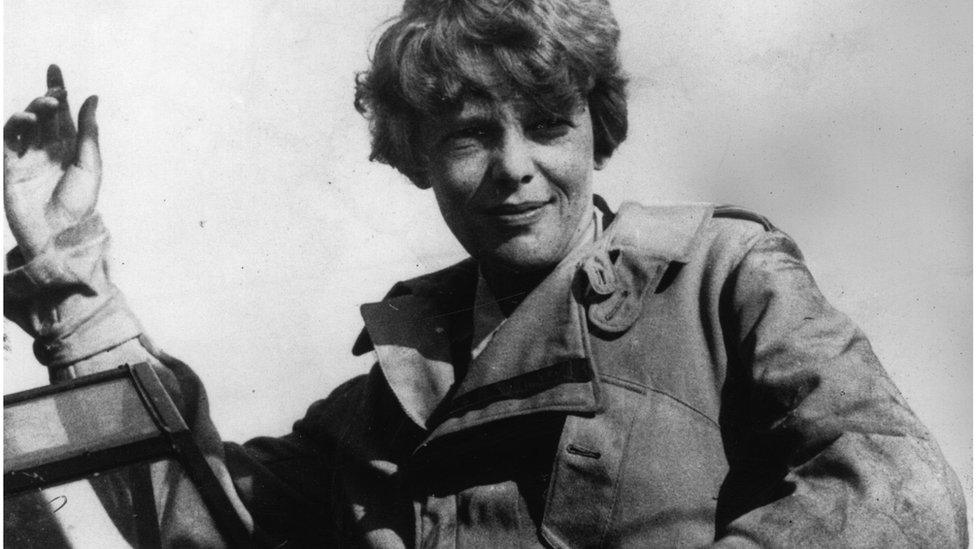Can the man who found the Titanic find Amelia Earhart?
- Published
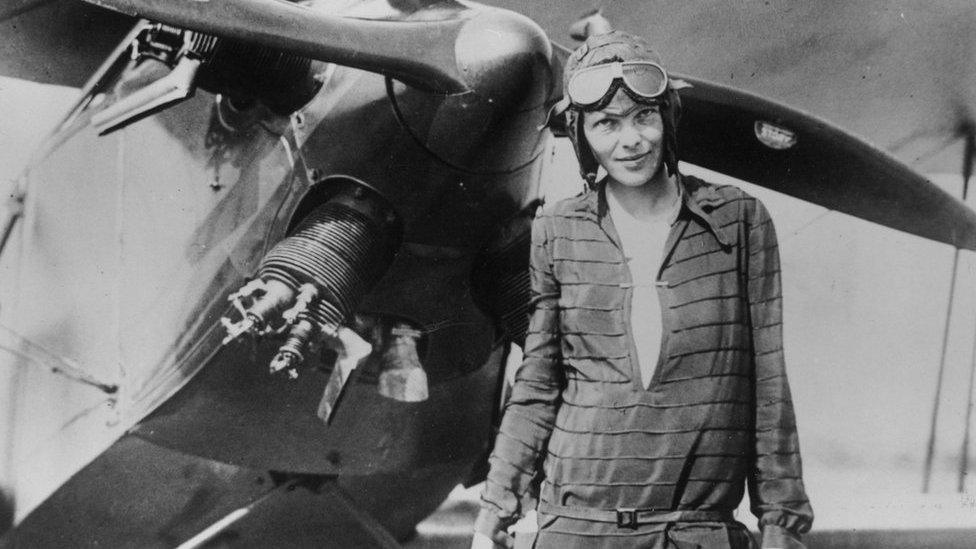
Amelia Earhart: A legend in her day, and a mystery ever since
The disappearance of Amelia Earhart - and the theories about what happened to her - have captured imaginations for decades.
In 1937, American aviator Earhart vanished during her attempt to fly around the globe, leaving no trace.
Now, a new expedition has set off for Nikumaroro, a tiny atoll in the Pacific, seeking to find her plane and possibly her remains.
And it's headed by another legend - the man who found the wreck of the Titanic, Robert Ballard.
Can he succeed where so many have failed?
While Mr Ballard radiates optimism, many Earhart experts are doubtful he will be able to uncover what happened to her.
The mystery
Amelia Earhart was not just a star of the aviation world - she was a celebrity. A pioneering pilot, in 1932 she became the first woman to fly solo non-stop across the Atlantic. Five years later, she embarked on what would have been her greatest feat - a circumnavigation of the globe.
Her flight was a sensation. It was followed by the press in every country she passed through and made headlines around the world.
"Earhart was one of the most admired women of the 1930s," explains Dorothy Cochrane, curator at the aeronautics department of the Smithsonian National Air and Space Museum in the US.
"She was a record-setting pilot and a woman who had created her own career in aviation, as a woman in a strictly man's world."
The journey took her from the US west coast to Brazil, across the Atlantic, Africa, the Middle East, India, Indonesia, Australia, and finally to Papua New Guinea. From there, only the Pacific was left.
One more refuelling stopover and she'd be in Hawaii - and from there it would be back to the US mainland. But after she took off from the town of Lae in Papua she never made it to that next stopover, on the tiny island of Howland in the Pacific.


What happened to her has never been established.
"Her disappearance without a trace is still one of the greatest mysteries of all time," Ms Cochrane says.
The man who found the Titanic
As far as oceanographers go, Robert Ballard brings as much star power as possible. Finding the wreck of the Titanic was not his only feat. The 77-year-old also found the legendary Nazi warship Bismarck in the depths of the Atlantic, and numerous other wrecks around the globe.
"I have always been intrigued by the story of Amelia Earhart because she shocked the world doing what everyone thought was impossible, much like what I have attempted to do my entire career as a deep-sea explorer," Mr Ballard says on the website of his expedition ship, the Nautilus.
The expedition, which set sail on 7 August, is funded by National Geographic and will feature in a TV documentary. The channel is clearly hoping the longed-for find will materialise - and be celebrated in a television showpiece.

Robert Ballard said he has always been intrigued by Amelia Earhart's disappearance
"I'm a hunter - you have to become the prey that you're hunting," Mr Ballard told the broadcaster. "I put myself in that cockpit, and I began becoming Amelia."
The island(s) in the Pacific
So where to look for Earhart and her plane? The mission is headed for the small island of Nikumaroro, in the middle of the Pacific.
When Earhart was scheduled to reach Howland Island on 2 July 1937 for refuelling, a US Coast Guard ship deployed to assist her was duly waiting for the Lockheed Electra plane to appear at the horizon.
Earhart was flying with dedicated navigator Fred Noonan and the two sent a message saying they were very close - but running short on gas.
Their last radio message said they were flying on a navigational line along which Howland Island is located. Then there was silence.
But on that same line, towards the southwest, lies Nikumaroro, some 648km (402 miles) from Howland. And that's what gave rise to speculation they might have missed Howland - and, during low tide, landed on the reef at Nikumaroro.
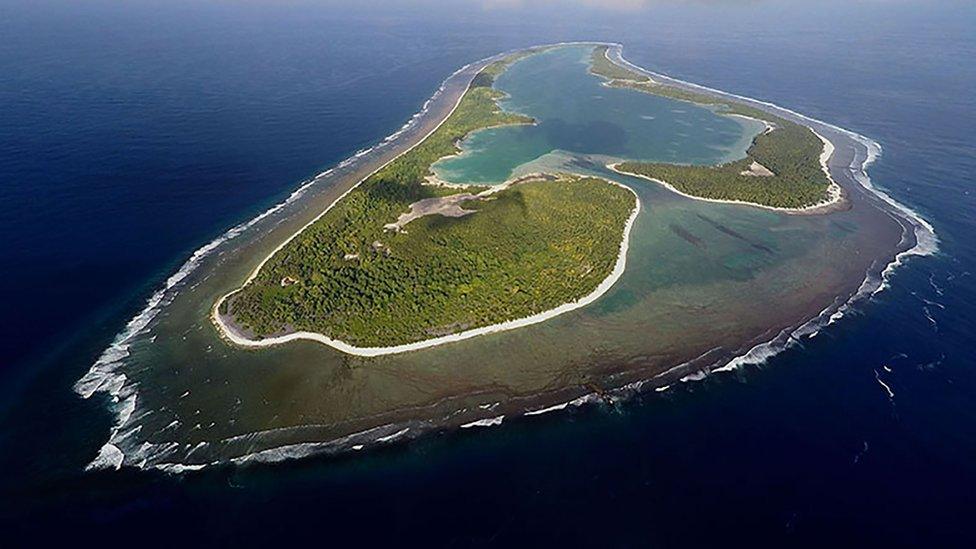
Nikumaroro island was uninhabited at the time Earhart would have landed there
If that happened, it would have merely bought them a few days. There's no fresh water on the tiny atoll and they would have died as castaways.
The theories and speculations
Earhart's disappearance sparked an immediate search operation involving the US Navy and Coast Guard. No clue was found and the official line - shared by most Earhart experts - is that the plane crashed into the ocean somewhere near Howland Island.
But what if it didn't?
There's no shortage of alternative theories - some of which are rather outlandish - but they are routinely discredited by Earhart researchers.
One such claim is that Earhart turned north and ended up on the Marshall Islands, where she was captured by the Japanese and possibly forced to work in anti-US propaganda during World War Two.
In 2017, a photo purporting to show Earhart and Noonan on a pier on the Marshall Islands made headlines, but its clues are so vague they hardly serve as conclusive evidence. There are also no Japanese records to support this claim.
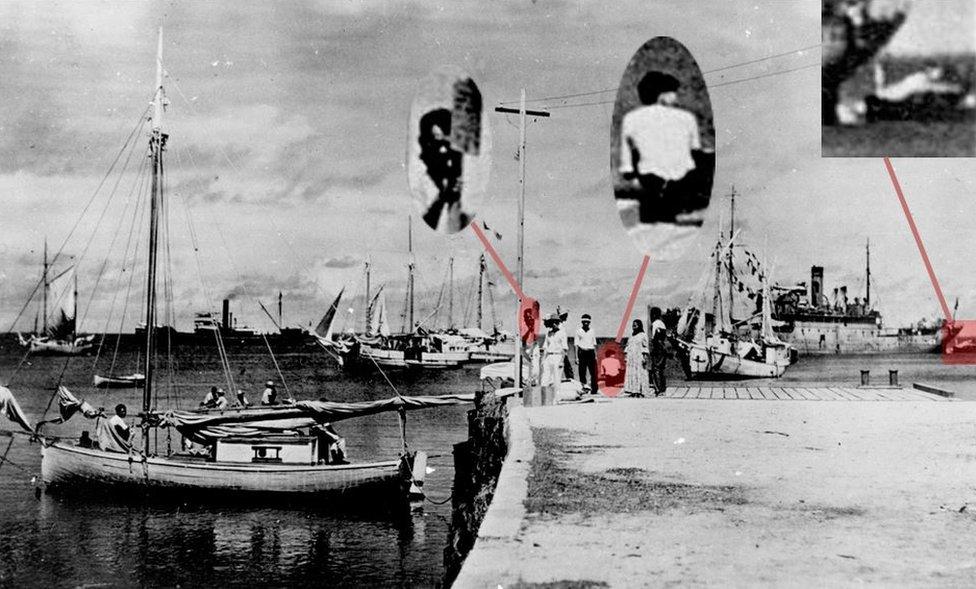
A photo allegedly showing (from left), Noonan, Earhart, and their plane on the Marshall Islands
Another story alleges that Earhart returned to the US - possibly after a stint in Japanese custody - and lived a quiet life under a false name somewhere in New Jersey. Once again, there's no credible evidence for this.
The Nikumaroro theory has more serious backers, however. Throughout the years it was boosted by a blurry photograph of what could be a part of the plane on the reef, an abandoned campsite, and even human bones that some believe could have been Earhart's.
The bones, found in the 1940s, were first interpreted as male, then lost, and later - based only on photos - identified by forensics as possibly being from a female of taller-than-average European build. That means they might match with the figure of Amelia Earhart.
The Nikumaroro theory is most prominently backed by Ric Gillespie, the head of The International Group for Historic Aircraft Recovery (TIGHAR).
He's been to the atoll himself several times and told the BBC his group had found "artefacts that speak of an American woman of the 1930s".
He also says several distress signals were received in the area after Earhart's disappearance, which he believes must have come from the aviator and Noonan.
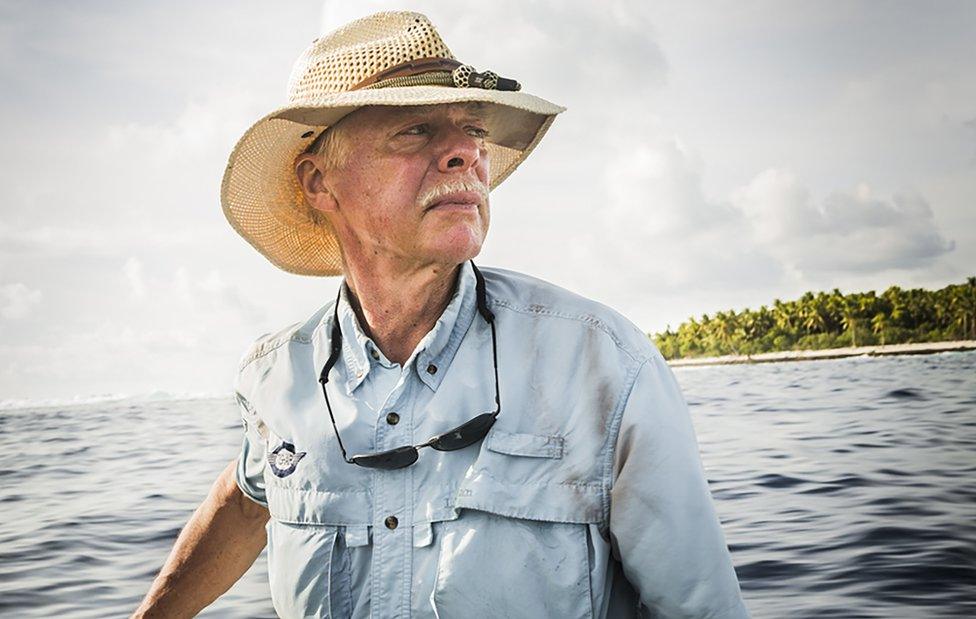
Ric Gillespie is confident Earhart ended up on Nikumaroro - which he has visited several times

Over the past decades several large-scale searches of the ocean around Howland Island have all failed to find the plane.
"These repeated, high-profile attempts to solve the mystery naturally attract media attention," Mr Gillespie explains.
"Each time a search fails to find a physical 'smoking gun' the mystery grows in stature and attracts another would-be The Man Who Found Amelia. It's an interesting self-perpetuating phenomenon."
The chances of solving the mystery
Mr Ballard will bring a large search operation to the task.
One party will comb the island for any clues, possible campsites, bones or other objects. The second team, led by the oceanographer himself, will search for the plane in the water.
If Earhart and Noonan crash-landed on the reef, their plane would soon have been washed into the sea by the incoming high tide.
The mission will use state-of-the-art technology to map the ocean floor. Among other things, Mr Ballard has unmanned submarines at hand that can go as deep as 3,962m (13,000 ft).
Many of the established Earhart experts fear Mr Ballard's grand mission is doomed from the start, however.
"I do not think the plane is anywhere near Nikumaroro," Susan Butler, Earhart expert and author of a biography on the aviator, told the BBC.
"That island was overflown by a plane catapulted from the USS Colorado a few days after she went missing. The pilot didn't see any recent activity."
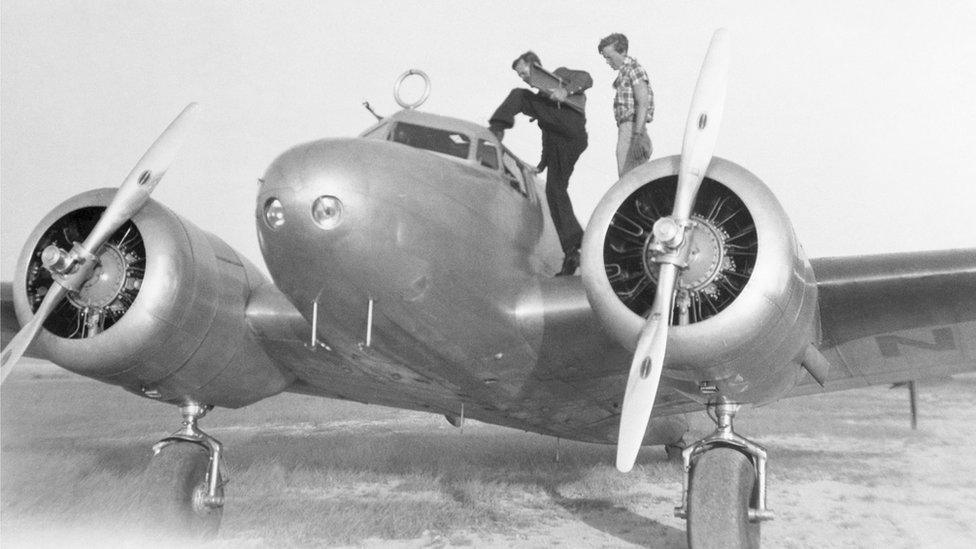
Noonan and Earhart pictured with their Lockheed plane
She outright dismisses Mr Gillespie's Nikumaroro theory as nonsense. "He is an expert at achieving publicity, and National Geographic falls for him every time. So do the newspapers."
Other experts agree it is almost impossible that Earhart could have made it to the tiny atoll.
"As she approached Howland Island, her radio calls became stronger," explains Ms Cochrane of the Smithsonian.
"She was most likely within 50 miles - she and Noonan felt they were nearly at the US Coast Guard ship.
"They simply ran out of fuel in the vicinity of Howland Island," she concludes.
She says Mr Gillespie and TIGHAR merely "found evidence of people and things on and around Nikumaroro - and indeed, people lived on the island at various times, and ships were wrecked nearby too.
"However, they never found any definitive evidence of Earhart, Noonan, or their plane. I do not see why any of their 'finds' or photos would outweigh the official record."
- Published8 March 2018

- Published27 February 2018
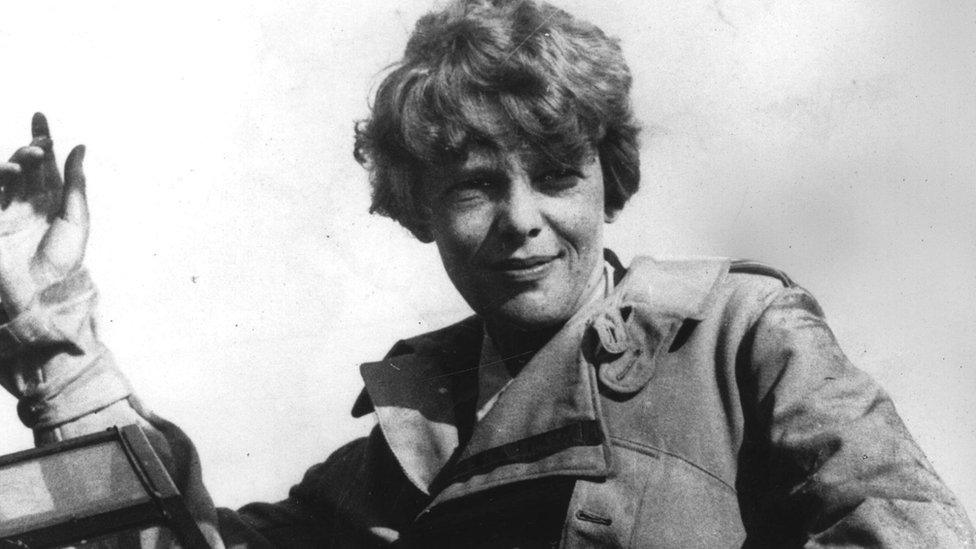
- Published6 July 2017
